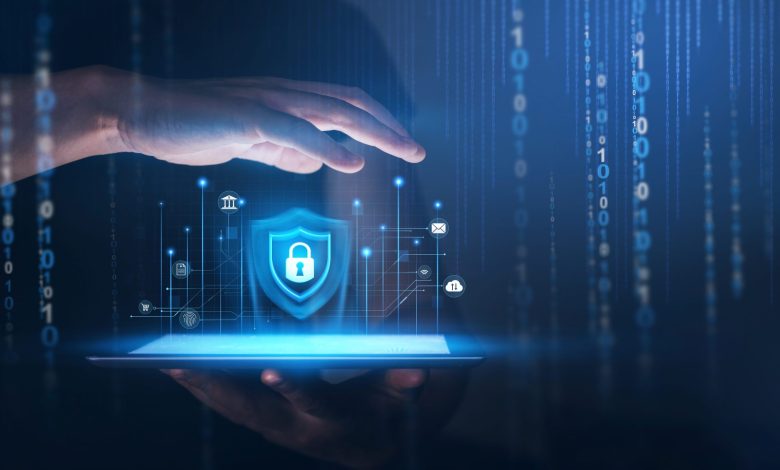
GenAI is proving to be a valuable ally in securing the software development lifecycle (SDLC), particularly in vulnerability management. In fact, a recent industry survey found that 86% of cybersecurity teams are using AI, with vulnerability and risk management emerging as the top use cases.
However, the immediate concern when we see increased use of GenAI is: what about the humans? This is why combining the capabilities of both humans and machines is so important. It creates a more robust and secure environment.
What are the benefits of AI in vulnerability management?
The true power of GenAI comes from its ability to make sense of complexity and recognise patterns. As a result, it can scan codebases, system configurations, and software artefacts for known vulnerabilities and suspicious activity.
Modern software is too vast for manual checks, and automated scanning can scan entire codebases way faster than any human team ever can. This allows for more frequent security assessments, reducing the window of opportunity for attackers.
GenAI does more than just find security flaws; it tells teams which ones to fix first by analysing their context, including asset sensitivity, exposure, and business impact.
Automating these repetitive and time-consuming aspects of vulnerability discovery, means that highly skilled security professionals can focus on more complex and strategically valuable tasks. With security teams being stretched thin, this leads organizations to more efficiently and effectively allocate those resources to provide maximum business value.
It’s important to note that implementing GenAI into vulnerability management is not a simple process. If rushed, businesses risk introducing new vulnerabilities while attempting to eliminate existing ones.
What challenges does AI present?
The same AI technologies used for defence can also be weaponised by malicious actors. Techniques such as prompt injection can manipulate GenAI behaviour if safeguards are not enforced, potentially leading to data leaks or compromised outputs.
Attackers could also attempt to poison the training data of defensive AI models to create blind spots or manipulate the models into ignoring real threats. Ultimately, the quality of input data is crucial. Irrespective of training data or operational prompts, poor-quality inputs will produce incomplete, inaccurate, or insecure findings, and inevitably introduce new risks.
Finally, many individuals excited by AI tools may download and use them without informing anyone, which is known as shadow AI. Unauthorised use of GenAI tools widens the attack surface and increases the risk of sensitive code or vulnerability data leaking outside organisational control.
Why are human capabilities critical when using AI?
As we’ve seen, blindly trusting AI outputs without critical validation can lead to missed vulnerabilities and a false sense of security. This is particularly dangerous in sectors like banking that handle large volumes of sensitive information.
There is also the risk of overlooking critical threats or failing to recognise context gaps. Without strong human security expertise, security teams could misinterpret AI-generated findings, potentially overlooking risks that would previously have been obvious.
GenAI systems will likely handle more routine scanning, triage, and remediation workloads. However, over-reliance on AI for vulnerability detection could lead to a decline in the skills of human security professionalsand it is crucial to maintain experts who can oversee, validate, and augment the work of GenAI.
Ultimately, implementation of GenAI should always be balanced with human expertise, not a replacement for it. Developers, engineers, and security teams must maintain sharp judgement about what “good” looks like across the software development lifecycle.
How do you balance security vs optimal performance with AI?
Organisations certainly shouldn’t be scared of using GenAI in vulnerability management, as the right application will make security teams’ lives easier. However, this won’t happen without the human element.
Before implementing GenAI, organisations should evaluate which tools work best for their processes. This means identifying where automation can have the greatest impact and which workflows will still require strong human oversight, whether that’s vulnerability scanning, risk prioritisation, or remediation support.
The most effective GenAI tools are those designed specifically for security use cases. Key features to look for include transparency, governance capabilities, integration flexibility, and clear mechanisms for human review. Vendors should be able to demonstrate how their models are trained, updated, and protected. If they cannot, it would be an immediate red flag.
Once you have selected your GenAI tools, consider how they integrate with existing systems. Tools should align with your current scanners, SIEM platforms, ticketing systems, and DevSecOps pipelines. This maximises efficiency while avoiding fragmentation.
Before full deployment, rigorously validate GenAI outputs against known vulnerabilities. Regular optimisation ensures AI-enabled security management evolves alongside the threat landscape.
Again, it’s essential that developers understand how to use these tools effectively. Both during and long after deployment, continuous training should be provided so employees develop the skills needed to use GenAI responsibly. Training should cover tool functionality, validation practices, and secure AI usage policies to prevent over-reliance and mitigate shadow AI risks.
The adoption of GenAI has made it an exciting time for vulnerability management. It will do the heavy lifting in vulnerability detection, prioritisation, and remediation, making the lives of security teams much easier. However, the foundation of successful GenAI implementation in security lies in employees having the right skills, context, and oversight to support it.




